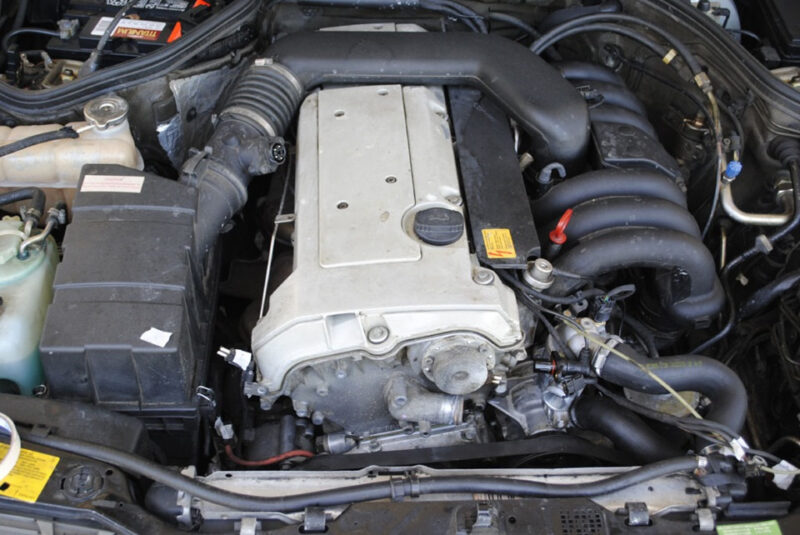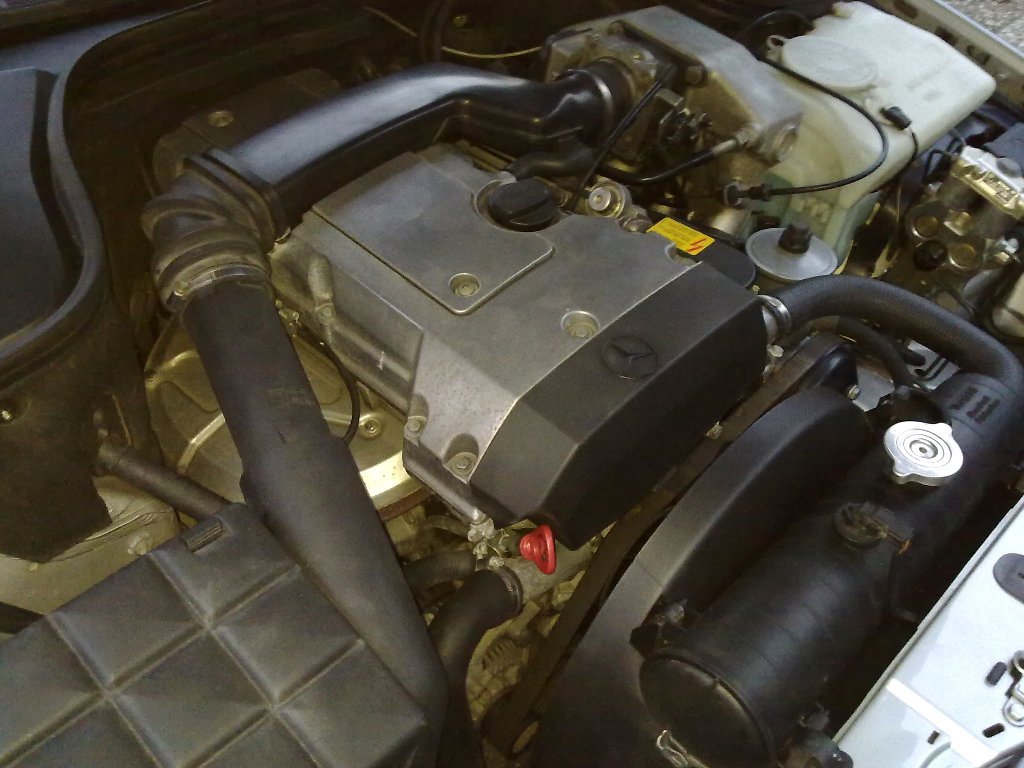Characteristics of the M104 engine
| Characteristics | Value |
|---|---|
| Production | Stuttgart-Bad Cannstatt Plant |
| Engine make | M104 |
| Years of manufacture | 1989-1993 |
| Cylinder block material | Cast iron |
| Power system | Injector |
| Type | Ready |
| Number of cylinders | 6 |
| Valves per cylinder | 4 |
| Piston stroke, mm | 80.2 |
| Cylinder diameter, mm | 88.5 |
| Compression ratio | 10 |
| Engine displacement, cc | 2960 |
| Power, hp/rpm | 220 / 6400 231 / 6300 |
| Torque, Nm/rpm | 265 / 4600 272 / 4600 |
| Fuel consumption (300 SL-24 R129), l/100 km | City: 16.2 Route: 8.8 Mixed: 10.4 |
| Oil consumption, g/1000 km | to 1000 |
| Engine oil (recommended) | 0W-30, 0W-40, 5W-30, 5W-40, 5W-50, 10W-40, 10W-50, 15W-40, 15W-50 |
| Oil volume, liters | Total: 7.5 At change: ~7.0 |
| Oil change interval, km | 7000-10000 |
| Operating temperature, °C | ~90 |
| Engine life, thousand km | Factory data: – In practice: 400+ |
| Tuning (hp) | Potential: 600+ No loss of life: – |
| Fitted to models | Mercedes-Benz 300 E-24 (W124) Mercedes-Benz 300 SL-24 (R129) |
Design of Mercedes M104 E30 3.0
Mercedes M104The medium-volume representative of the M104 family (it also includes M104 E28, M104 E32, M104 E34 and M104 E36) was born in 1989 and was a cylinder block from M103 E30 covered with a new 24-valve head. In addition to the two camshafts, the improved cylinder head used hydrocompensators valve clearances and a system of variable valve timing on the intake shaft, which significantly improved the performance of the engine. The diameter of inlet valves is 35 mm, and the diameter of exhaust valves is 31 mm.

The fuel injection system is mechanical injection KE-Jetronic.
The single-row timing chain from the last M103 was replaced by a reliable double-row chain with a much longer service life.
The motor was produced only 4 years, after which it was supplanted by the M104 E32, with an increased displacement.
Modifications of engines M 104 E 30
- M104.980 (1989 – 1993) – version with catalytic converter for 300 E-24, 220 hp at 6400 rpm, torque 265 Nm at 4600 rpm. It was installed on Mercedes-Benz 300 E-24 W124.
- M104.981 (1989 – 1993) – analog in catalyst-free version for Mercedes-Benz 300 SL-24 R129. Power 231 hp at 6300 rpm, torque 272 Nm at 4600 rpm.
Disadvantages, breakdowns and problems of the Mercedes-Benz M104 engine
Despite the strong reputation of a reliable and powerful power unit, the Mercedes-Benz M104 series engine is not devoid of typical age-related sore spots. Many owners respect it for its resource, elasticity and good traction, but over the years a whole list of characteristic problems appears, which should be taken into account when operating or buying a car with this motor.
The main trouble is oil leaks
The most common problem of M104 is numerous engine oil leaks. And these are not isolated cases, but practically a norm for age copies. Most often the following gaskets “give up”:
- P-gasket (at the bottom of the engine),
- Cylinder Block Head Gasket (CGB),
- Oil filter heat exchanger gasket.
All these places over time begin to leak oil, and without timely maintenance, the engine can become covered with a layer of dirt and oil dust, and in the worst cases – lose pressure or even “catch a wedge”.
Fan viscoil is another weak element
Quite often, the fan viscoil, which is responsible for cooling, fails. This breakdown is dangerous because the driver may not immediately notice overheating, especially in the heat or in traffic jams. And M104 engine is extremely sensitive to overheating – even one excess of permissible temperature can lead to deformation of the cylinder head.
Electrics: a weak link
Another headache of owners is under-hood wiring. In early versions of the M104, it suffered from poor-quality insulation, which eventually falls apart, causing short circuits, unstable operation of sensors and floating revs.
Also frequently failing:
- ignition coils, especially in modifications with individual coils for each cylinder,
- connectors and sensors sensitive to moisture and vibration.
General age and metal fatigue
We need to keep in mind that the “youngest” M104 motors are over 30 years old. Even with good maintenance and careful operation, these units require more and more attention. Wear of oil seals, gaskets, sensors and cooling system elements is a natural process.
Summary
M104 engine is a real old-school Mercedes: reliable, tractive and repairable. But with age typical “diseases” appear: oil leaks, overheating due to cooling system failure, electrical problems and wear of components. If you eliminate weak points in time and monitor the technical condition, it is able to serve for many hundreds of thousands of kilometers.



0 Comments